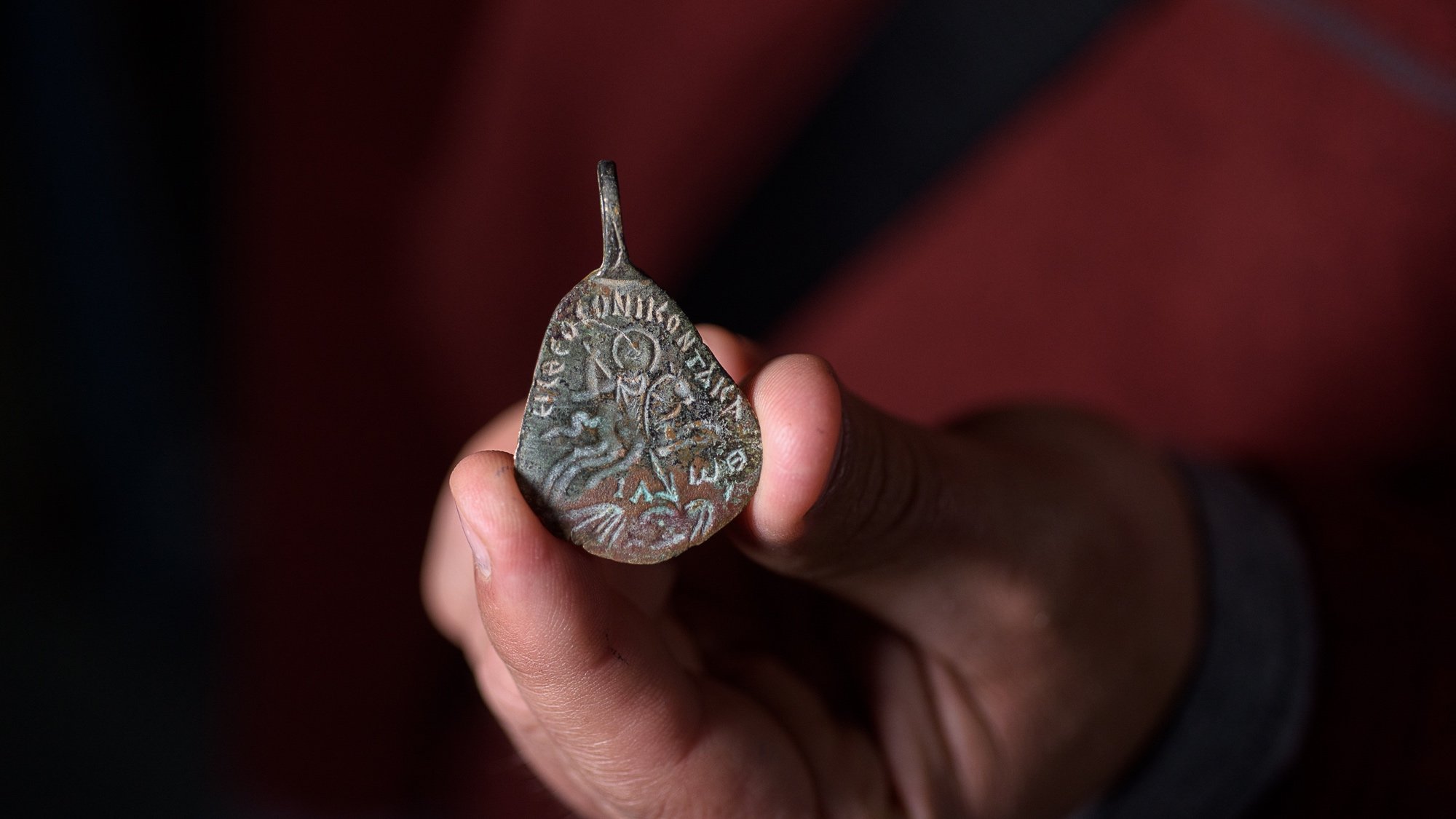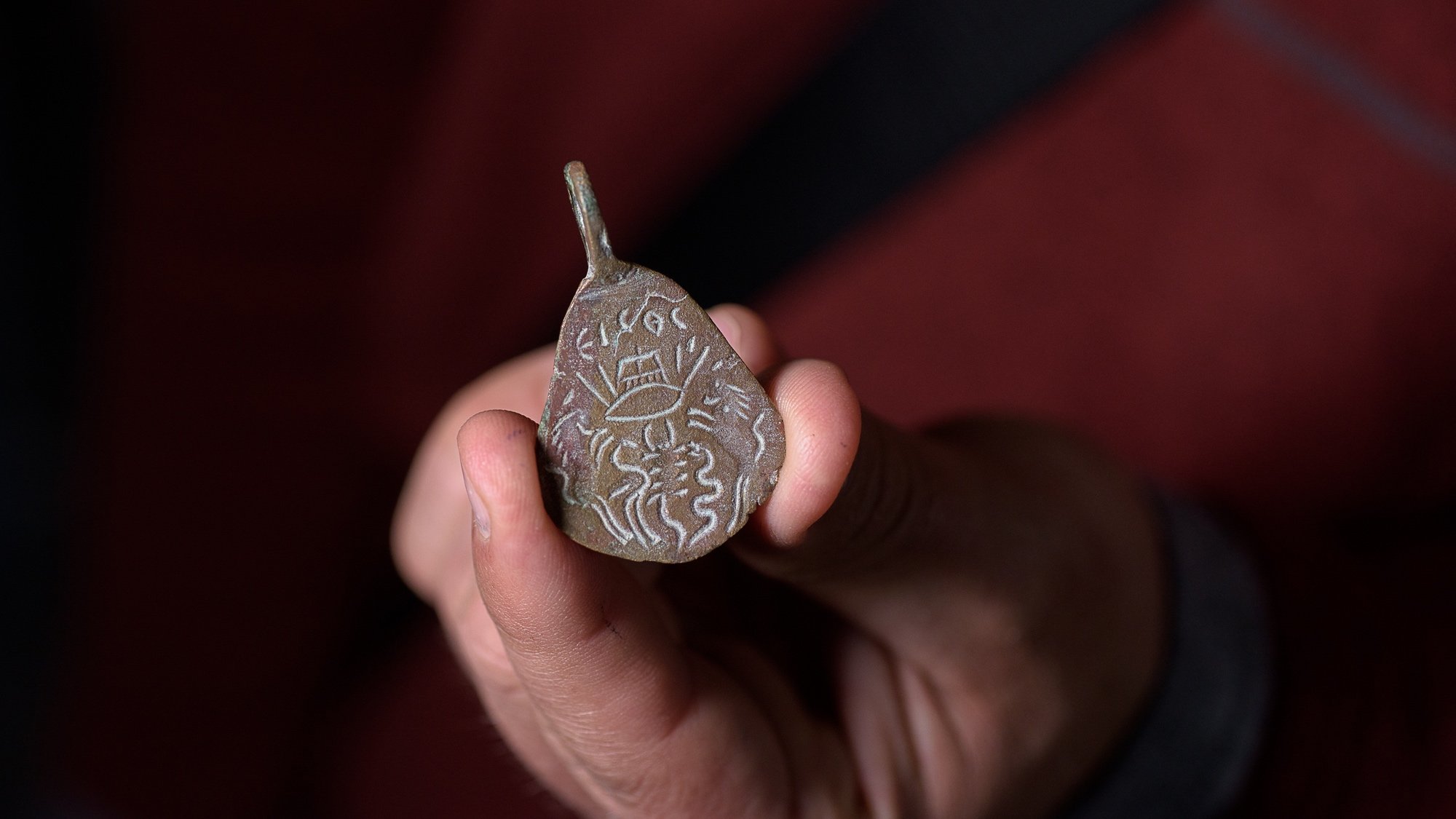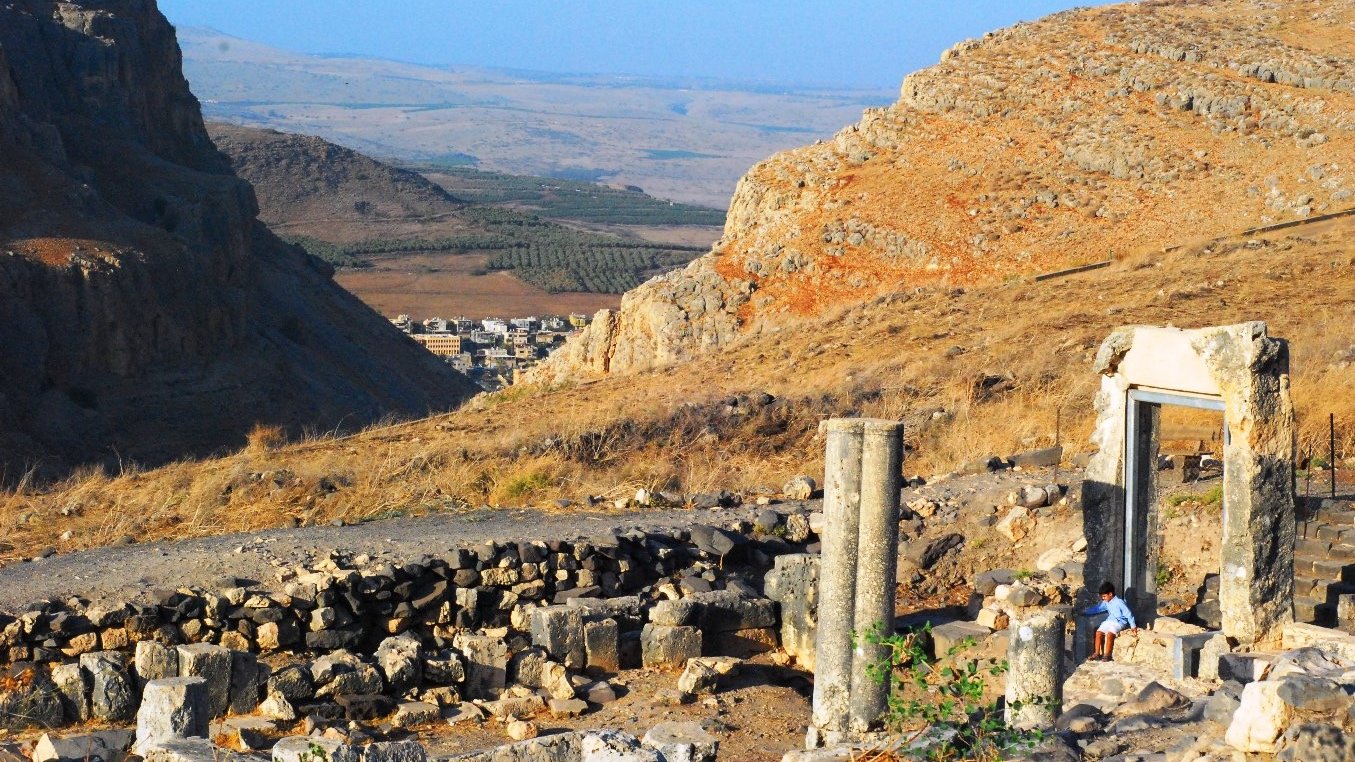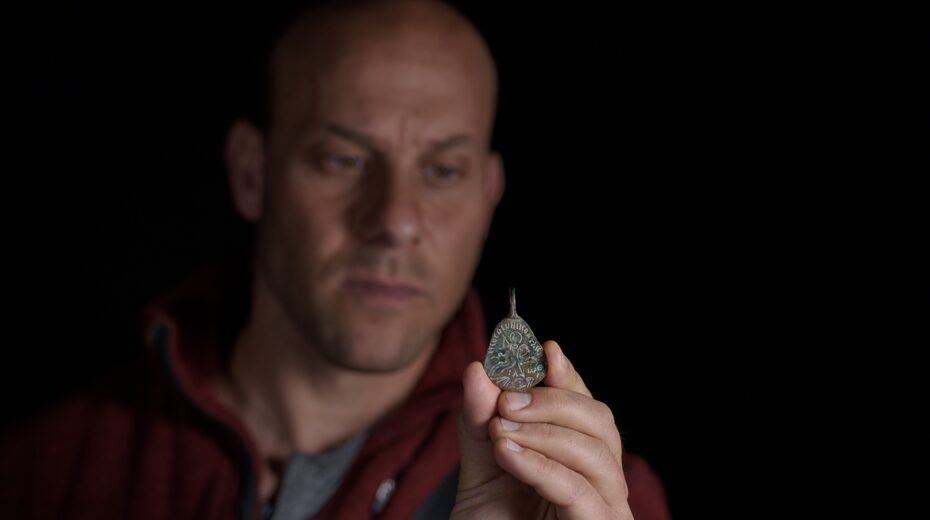An Israeli Hebrew news outlet reported this week on the discovery of an artistic bronze amulet about 1,500-years-old in the Galilean Jewish village of Arbel.
The amulet displays these words, on one side, written across the top in Greek: “The One God Who Triumphs Over Evil Things.” Underneath is a rider on a horse, holding a spear pointing at a female figure on the ground, as well as 4 Greek letters forming a transliteration of the Unique Name of the LORD in Hebrew (YHWH).

On the other side of the pendant are 5 Greek letters E. I. S. Th. S. (probably short for “One God”) and underneath the form of an eye, along with other symbols.

Dr. Eitan Klein (pictured top), Deputy Director of the Antiquities Authority’s Robbery Prevention Unit, analyzed this archeological find:
“The amulet belongs to a group of amulets from the 5th-6th centuries CE, originating from the Eretz Israel-Syrian area, and was most likely made in the Galilee or Lebanon. Sometimes, this amulet group is called a ‘complete seal,’ in which the rider on a horse defeats the evil spirit – in this case, a female figure, identified with the mythological female demon Gello / Gyllou, who threatens women and children and is associated with the evil eye… Therefore, it is likely that the mascot was used for protection against the evil eye, possibly on children and women.”
The pendant/amulet was found in Arbel a few decades ago but was only now handed over to the Israeli Antiquities Authority. Arbel is an Israeli moshav (agricultural village) above the Sea of Galilee just minutes from the city of Tiberias. At the edge of the village, looking down through a valley cleft, toward the Sea of Galilee, are the ruins of an ancient synagogue from the Byzantine era – approximately 5th century AD (CE).

Up until now archeologists had not thought that Jews wore this kind of amulet. The finding of the amulet next to a Jewish synagogue challenges that assumption. It shows what appears to be a syncretistic mixture of the desire for protection against the evil eye of envy and against a Greek mythological female demon figure together with belief in the name of the God of Israel expressed in Greek.
What do you think of this “interesting” mixture, and of culture and religion influencing each other in general?















